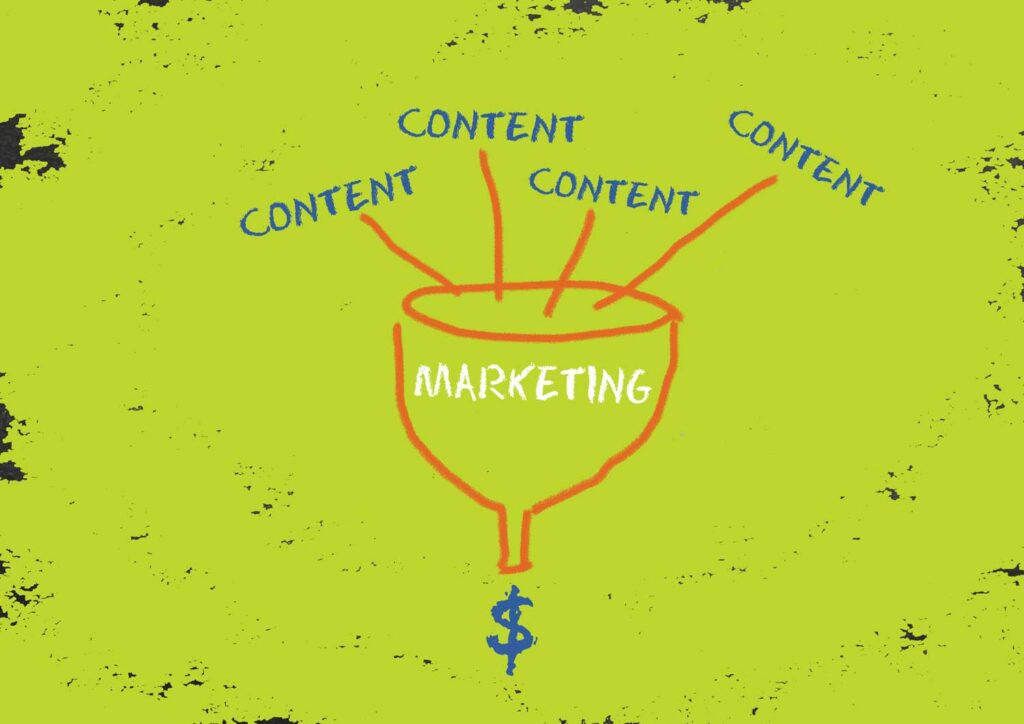Five tips for tech companies – and five for the B2B marketing agencies that serve them – to navigate marketing in 2022
As 2022 cranks up, our strange pandemic paradox continues. On the one hand, COVID seems to be dragging on forever, with Omicron being the latest travel-restricting, event-canceling variant. On the other, the past two years seem to have flown by, particularly when we reconnect in person with friends, colleagues and loved ones.
This reality hit home for me when my cousin’s young daughters visited this past Thanksgiving. I’d never met one of them and she was already walking and talking. In moments like these, we can’t help but wonder where the time went.
Things are considerably more stable on the business front. The companies that successfully adapted to the pandemic have become permanently adaptive and capable of distributing workloads and workforces across diverse geographies and infrastructure. There’s still some technology shuffling and process modeling underway to optimize what they built (or rebuilt) virtually overnight. That said, we now have a relatively stable view of the paths businesses will take going forward.
Here are 10 marketing tips – five for tech companies and five more for the B2B technology marketing agencies that serve them – that can help you navigate marketing in 2022.
2022 Marketing Tips for B2B Tech Companies
Tip #1: Lead with content
“Digital” isn’t special anymore. It really wasn’t before the pandemic, but now that workforces – and decision-makers – are distributed, it’s the standard way of doing things. In fact, your prospects and customers are bombarded with content. The key to success today is what you say and how you say it.
Most marketing executives know this – and may even verbalize it – but nonetheless continue to lead with platforms that they then try to fill with content instead of developing content strategies that channelize and atomize high-value content for maximum effect. That’s a mistake. Here’s why:
- A content-first approach to marketing delivers dramatic boosts in engagement and conversions when led by specialists in strategic messaging and branding. Dig into any story you’ve ever heard about the stunning impact a new team or agency had on marketing efforts and you’ll find content experts at the heart of the story, whether that’s ads, landing pages or sales-enablement materials. It’s no coincidence that, in the tech space, the most effective marketing teams are anchored by content specialists who spent years in technology media, distilling complex technical and market information into digestible, relatable and, most importantly, actionable information.
- Content is the key to delivering a superior customer experience. Ask any strategic consultancy where today’s competitive battlefront lays and they’ll tell you it’s all about customer experience. Process is vital to this equation, of course, but nothing impacts user experience more than delivering consistent, strategic and integrated content that informs and empowers customers across the lifecycle. The same goes for your sales partners, for that matter, which BuzzTheory senior partner and channel guru Khali Henderson calls “power customers” because of their force-multiplier effect on growth and revenue retention.
- Effective content strategies create more sales and retain more customers. I can read your thoughts from here. Before you say, “Thank you, Captain Obvious,” we’re not just talking about delivering the right messaging at the right time in the customer journey. All of that’s important, of course. But when content prowess is mixed with revenue marketing principles (see Tip #2 below), every piece of content is leveraged to generate maximum revenue and potential ROI.
- Content-first marketing strategies simplify vertical and channel marketing efforts. It’s easier and more efficient to build high-value content and tweak it for verticals, sales partners and other players in your value chain than it is to look at each player and create unique content for them. This dynamic reaches beyond just sales and marketing, by the way. Want to eliminate disconnects between your sales teams and your support and product teams? Build stakeholder-specific franchising and atomization into your strategy so your content team keeps everyone up-to-date and on the same page. It’s efficient, easy, and boosts customer experience consistency and revenue generation when customers encounter different business units.
- Robust content strategies feed revenue marketing. See Tip #2.
Tip #2: Lean into revenue marketing
When the term “revenue marketing” first emerged, channel marketers everywhere said, “That’s what we’ve been doing all along!” But that’s not quite accurate. If they’re doing their jobs right, channel marketers are doing something more akin to “Revenue Marketing Plus” because the distribution layers are more complex.
There are lessons to be learned from this reality.
For example, since channel marketers tend to excel at “regular” B2B marketing while traditional marketers struggle in channel marketing, common wisdom among technology marketing gurus holds that a math-like dynamic is at play. Channel marketing components aren’t necessarily “harder” in-and-of themselves, the hypothesis goes, but the channel marketing process is more complex. As such, channel marketers can handle simpler marketing without difficulty, just as analysts or statisticians steeped in complex equations can breeze through simpler math problems.
Forrester’s study of channel marketing and PR firm efficacy in earned media generation seemed to validate the channel’s consensus when it found that only 85 of 25,000 studied marketing agencies studied can deliver it at all, and just 13 excel at it. But we think the revenue-oriented approach to content generation by channel marketing experts also drives separation between effective and ineffective marketing efforts, even when needs are not as complex. Thus, even if you don’t have a seasoned channel marketing team, you can benefit from adopting “revenue marketing plus” principles. That’s because:
- Revenue marketing creates a repeatable process for bridging gaps between sales and marketing. The systematic exchange of information between sales and marketing teams allows the insights and successes of each unit to boost the performance of its counterpart.
- When led by content-first teams, revenue marketing maximizes revenue opportunities from original content. This is where channel marketing experience gives revenue marketing a boost. Pointedly searching for opportunities to leverage content throughout sales hierarchies, across verticals, and in complementary marketing and sales-enablement efforts, creates more opportunities for ROI.
- Revenue marketing makes the CEO (and the rest of the C-suite) happy. If you want your company’s leadership to see the marketing department as a revenue (as opposed to cost) center, revenue marketing is your ticket. In fact, depending on your circumstances, you may even need to apply revenue marketing principles to your efforts in order to pursue “soft marketing” goals like developing brand awareness.
Tip #3: Emphasize social proof
Most B2B buyers research and make purchasing decisions – or significantly narrow their options – online before talking with your sales teams. They look online for validation that your company can deliver before filling out a form, starting a chat or picking up the phone.
How do you make the cut? Through earned media and genuine, fully sourced (read: not anonymous) testimonials and case studies.
Tip #4: Learn to love earned media
Let me break the wall a moment here to talk about why our agency has an earned media practice. There are plenty of incentives not to. Nothing is more disruptive to workflows, drives more unforeseen scrambling or causes teams to work more unplanned late nights than an earned media practice. And to put a number on the cost of that disruption, pureplay digital agencies generate 50% to 100% more revenue per employee than pureplay earned media companies.
So why, then, do we have an earned media component in our practice and take it seriously enough to have been named one of the most recommended globally at it, given our content and revenue-marketing bent? Because earned media delivers incredibly powerful results across so many vital marketing and revenue-generating areas.
- Earned media creates powerful social proof. Decision makers value mentions and sourcing in third-party industry and news publications more than any other means of establishing credibility. It’s so powerful that the only factor they value more when making purchasing decisions is a direct referral from someone they know. In other words, earned media helps you close deals. And if your company is a player in the channel, it helps you recruit sales partners and helps those partners close deals for your solutions.
- Earned media delivers potent SEO benefits. Media properties tend to rank highly for domain authority. Links from high authority sites boost your own site’s domain authority, which means better placement in search results. Over time, this can deliver significant boosts in qualified traffic (read: leads) to your website. And since media articles tend to place very high in SEO searches, mentions in articles benefit your company even when media properties don’t link to your website.
- Earned media creates mindshare, raises brand awareness and builds brand value. Earned media also serves its primary purpose of building your brand and reputation in your target markets and distribution channels, which helps with customer acquisition and retention.
Tip #5: It’s not live events vs. digital outreach… it’s both
The “new normal” is decentralized, with work-from-home (WFH) and work-from-anywhere (WFA) now firmly rooted in business models large and small. This reality has more implications for you than where you personally work from:
- The digital outreach efforts you cranked up are here to stay. Whether you started from scratch or poured more gas on the fire, you’ll no longer be able to “drop in” on contacts as freely as you were before the pandemic. That means your digital marketing and outreach will remain front-and-center going forward.
- The value of many buyers under one roof (conferences, expos, etc.) is stronger than ever. And for some prospects and customers, live (on-site) events will represent your only chance to establish in-person relationships.
- You can excel at both. In fact, you need to. Leverage brand and content specialists (see Tip #1) to help you develop a seamless, unified experience for your prospects both digitally and on-site at live events.
Bonus Tip: If you plan to use a B2B marketing agency, pick a specialty firm that can market technology
Working with a “best fit” agency had long delivered operational and economic benefits that were already accelerating before the pandemic struck. Over the past two years, those benefits have expanded:
- B2B marketing agencies combat turnover-related chaos and the “Great Resignation.” Stability and affordable access to talent were already drivers of agency outsourcing. Effective marketers – particularly with content chops – are hard to find at the best of times. The pandemic made it exponentially more challenging. So much talent is exiting the workforce that we’re living in what’s been dubbed the “Great Resignation,” which in turn is leading to a massive reshuffling of talent across the (even smaller) workforce. The result? Companies are looking to agencies not just for traditional value but also as genuine lifelines to help them weather the chaos.
- Some agencies — particularly of the full-service variety — can help you tame internal application sprawl (and budgets). Marketing is app-intensive, which is not great news for CMOs and marketing directors at a time when their organizations have had to deploy applications en masse for work-from-home models. Leveraging the infrastructure of agency partners can go a long way toward alleviating budget woes and the need to defend every license or purchase.
- The right agency (that knows your space and has proven ability) delivers you the same value proposition you provide to your customers. Your solutions save your customers money, simplify their lives and add value. That’s precisely what the right agency partner can do for your company.
The challenge, of course, is finding that right, or “best fit,” agency. As discussed earlier, independent research finds that few – far fewer than one percent – of agencies can handle complex B2B marketing needs. If you’ve been around the block a time or two with agencies, that won’t surprise you. But you can increase your odds of finding the right partner dramatically by screening in advance for some key attributes and capabilities. Look for a tech marketing agency that:
- Lives, eats and breathes content. All the marketing tech and apps in the world cannot make up for messaging that falls flat. At the risk of sounding like a broken record, content makes or breaks everything you do in marketing. It’s the hardest to source but pays for itself a thousand times over.
- Speaks your tech fluently. Another driver behind dissatisfaction with agencies (aside from poor content) is the lack of understanding of what your solution does and how it solves customer problems in practical terms that resonate with your prospects and customers. An agency you have to clean up behind costs you valuable time and limits your ability to scale your marketing efforts.
- Is both specialty and full-service. Superior and unified customer (and prospect) experience is universally recognized as the competitive battlefront of the 2020s. That requires unified messaging across all your marketing and communications activities (internal and external). Working with a full-service agency makes that happen more economically and comprehensively than you can achieve via piecemeal messaging. And since that agency can instantly update messaging from lessons learned across your activities, it also means significant boosts in conversions and ROI.
- Has proven earned-media chops. Many agencies avoid earned media because it’s laborious, chaotic and challenging. Find one that embraces the chaos and does it well (for all the reasons in Tip #4 above).
- Has both channel and retail marketing ability (if you’re targeting the channel). If you’re in the channel – or plan to tackle it – aim for a proven channel marketing agency. They’ll be able to handle your retail marketing with no problem. Retail-only marketers, on the other hand, tend to struggle when faced with the quirks and complexities of marketing in the channel.
2022 Marketing Tips for B2B Technology Marketing Agencies
If you’re on the agency side of this equation, there are some immediate steps you can take to improve life for your agency and your customers.
Tip #1: All together now: “Conversational Content Connects and Converts”
There’s a lot of frustration right now in the “platform-certified” set of marketing agencies that have built practices around a platform (or two) because they’re losing clients to content-focused firms. It’s fine to be certified in products your clients use – many agencies get certified for their own efficiency if nothing else – but building your practice around that won’t cut it anymore.
You need — no, make that your clients need you — to focus less on the delivery mechanism and more on the package you’re delivering. That means brand and messaging strategy, complex campaigns that deliver experiential continuity, and, of course, content that connects and converts.
In the technology marketing space, that doesn’t mean just getting the technology and what it does right (though if you’ve done that, congratulations, you’re way ahead of most of the pack!), but how it’s communicated.
Tip #2: Learn revenue marketing or go home
You may not directly brand your firm as a revenue marketing agency. Still, if you want to compete in three years, you need to start mastering the principles of revenue marketing now. The pressure on marketers to generate or accelerate revenue growth will only increase from here.
Tip #3: Engineer simplification to tackle B2B tech marketing complexity
Your clients are overwhelmed by everything they have to do – strategy, publicity, design, content and copywriting, events, social media, software, multimedia, data analytics and web development. That complexity doubles in B2B and becomes even more overwhelming in tech. And now, they’re dealing with the fallout of the Great Resignation. You can help them, and you, by engineering simplicity. Do that by:
- Centralizing project management around client success managers to eliminate the distance between client requests and the deliverables they receive
- Clarifying desired outcomes in advance for every deliverable
- Creating repeatable processes for everything you do
- Templatizing everything you can for your client(s) in advance
- Hiring experienced professionals to plan, develop and execute client campaigns
- Developing a world-class, in-house training program to bring new hires and your existing team up on clients, the marketplace in which they operate and the technologies they deliver
Tip #4: Leverage AI where it moves the needle and nowhere else
No sector is targeted more with AI-enhanced solutions than the marketing space. In fact, marketing applications make up many of AI’s most prominent use cases. There are some emerging areas where AI can point humans in the right direction for refinement—analytics, lead scoring, automation, intelligent chatbots, SEO gap analysis, ad spend and landing page optimization, etc. It’s peppered throughout our own operations in strategic places.
That said, it’s not the agency panacea vendors make it out to be. Not even close. Automated videos, AI-based content outlines and relational image selection all fail epically in the B2B tech space, where AI struggles mightily with context.
Tip #5: Go deep, not wide
Now, more than ever, your clients need partners, not vendors. Focusing more on developing deeper engagements with clients creates:
- A much more knowledgeable and valuable partner for your customers
- Better morale in your agency when “your team” is part of “their team”
- More efficient operations (it’s easier to manage 1000 projects across 20 clients than 200)
It’s All About Responsiveness
All in, successfully navigating 2022 means operationalizing our responses to the “new normal.” For CMOs and marketing directors, that means focusing heavily on content to deliver superior experiences for your prospects and customers, and better outcomes for you. For agency directors and managers, it means aligning (and for many, realigning) your services to help your customers make these leaps.











